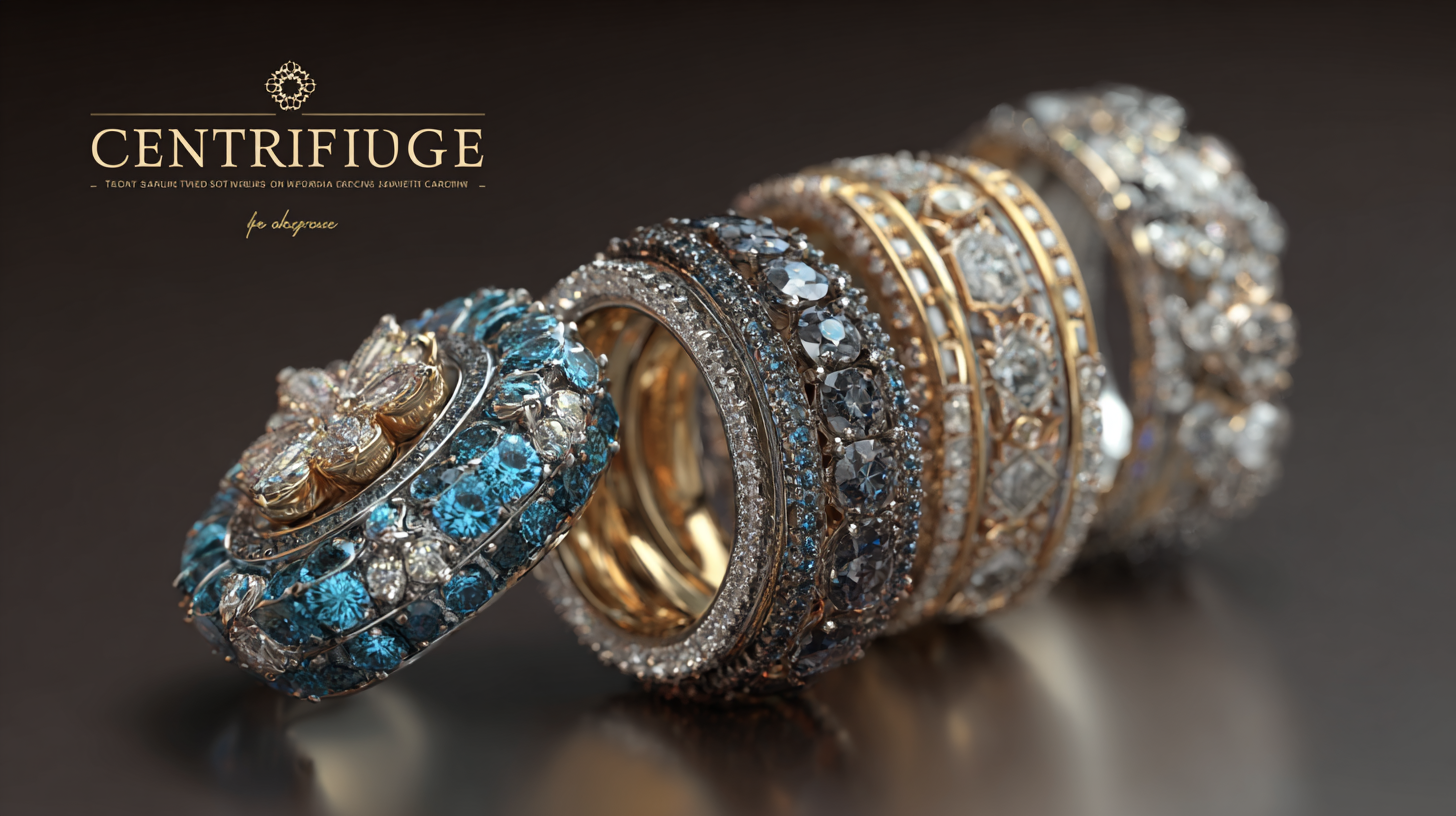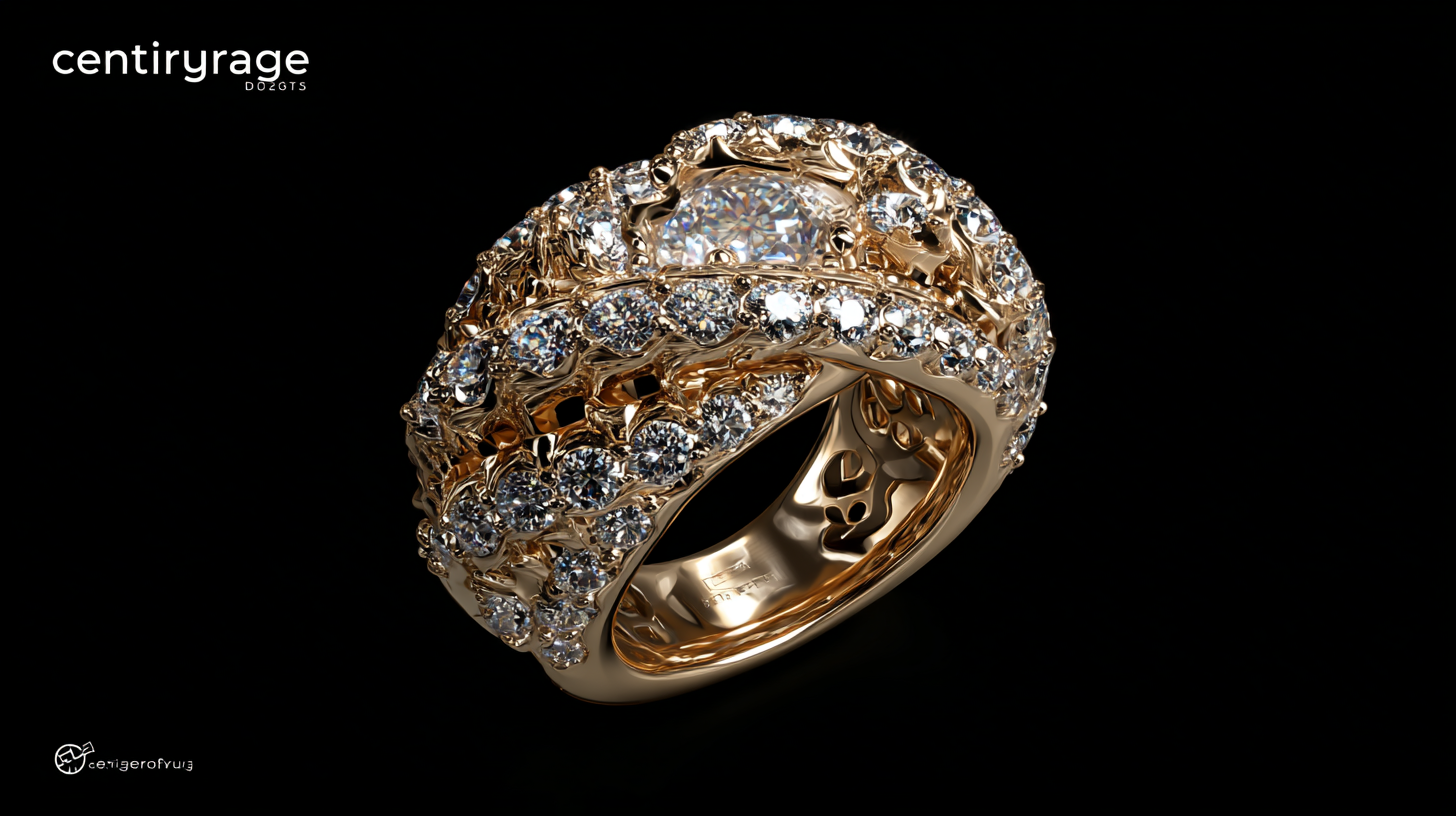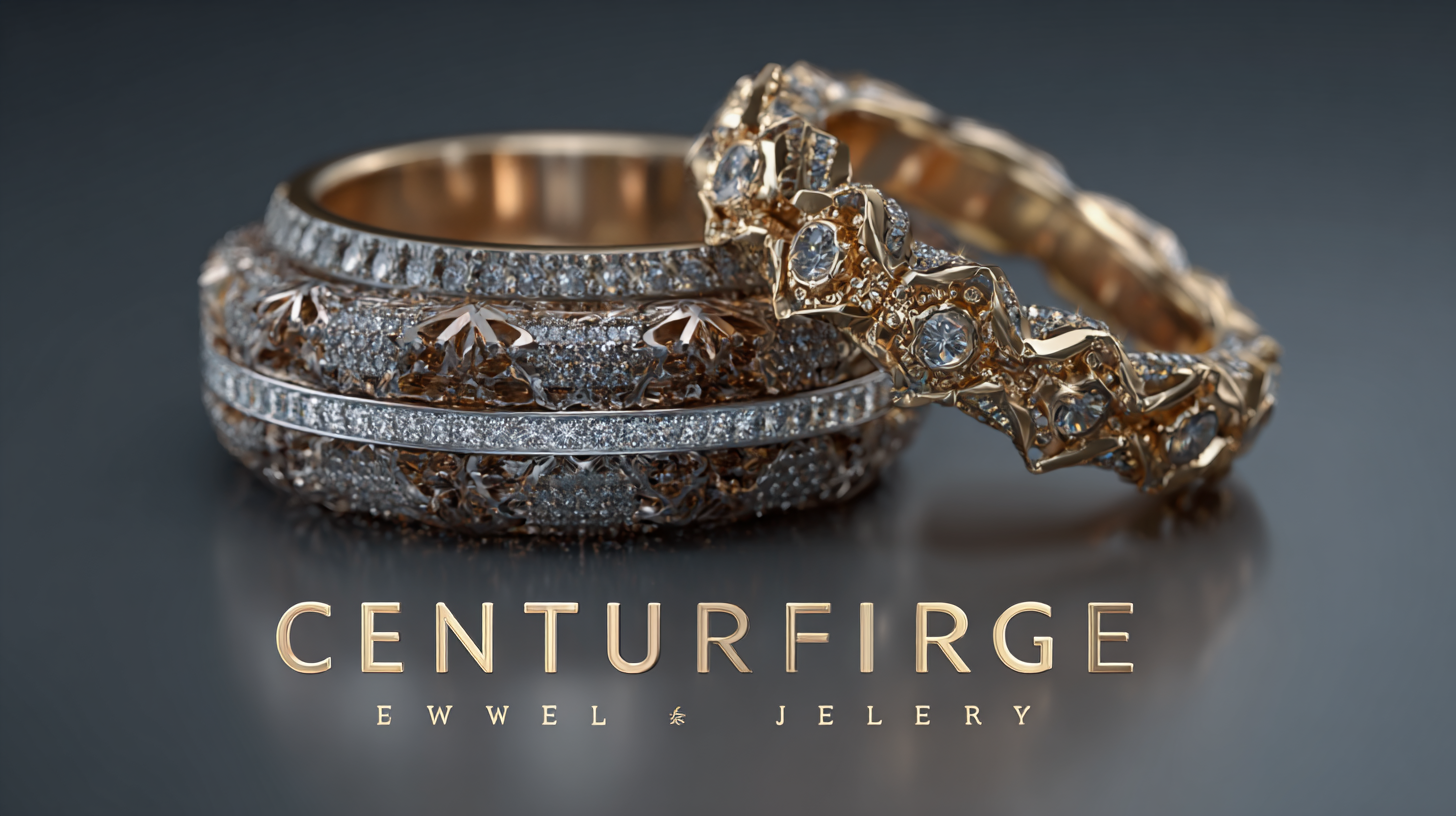As the jewelry industry evolves, innovative trends and cutting-edge technologies are set to redefine how we source and create exquisite pieces. By 2025, the market is expected to reach a valuation of approximately $480 billion, fueled by the growing demand for personalized and sustainable jewelry. Among the intriguing advancements, "Centrifuge Jewelry" is emerging as a game-changer in the production process, utilizing centrifuge equipment to enhance precision and efficiency. Reports indicate that the adoption of such technologies can streamline operations and improve the quality of finished products, thereby catering to the discerning tastes of modern consumers. This blog will explore these transformative trends and provide essential tactics for sourcing the best centrifuge equipment, ensuring that jewelry manufacturers can stay ahead in this dynamic landscape.

The jewelry industry is undergoing a transformative shift towards sustainability and ethical sourcing, as evidenced by the latest trends emerging in 2025. Many brands are now prioritizing materials that align with environmentally conscious practices, reflecting a significant consumer demand for transparency and responsibility in their purchasing choices. This is further highlighted by the growing popularity of lab-grown diamonds, which have emerged as a sustainable and ethically sourced alternative to traditional mined gems. Reports indicate that the lab-grown diamond segment is set to revolutionize the market, providing consumers with a luxurious option that is both environmentally friendly and more affordable.
Moreover, the industry shows a notable shift in consumer preferences towards brands that not only emphasize aesthetic appeal but also promote ethical practices. The emerging jewelry brands are increasingly committed to fairness in labor practices and sustainable sourcing of materials. This transition is crucial as the global online jewelry market is projected to grow by USD 58.4 billion from 2024 to 2028, driven by innovative design technology. As consumers advocate for socially responsible products, jewelry designers are urged to integrate these values into their collections to remain relevant and appealing in this evolving marketplace.
The jewelry industry is undergoing a remarkable transformation driven by advancements in technology, particularly through the use of 3D printing. This innovative process allows designers to create intricate and unique pieces that were previously impossible to manufacture using traditional methods. By removing the constraints of conventional casting, 3D printing enables rapid prototyping and customization, allowing brands to meet individual consumer demands with greater efficiency. Because of this, jewelry products can be tailored to fit personal styles, ensuring that each customer experiences a sense of exclusivity.
Moreover, the integration of AI and machine learning in jewelry design is streamlining production processes. Designers can utilize software to predict trends and analyze consumer preferences, aiding them in crafting pieces that resonate with market demands. This technological synergy not only enhances creativity but also minimizes waste, making it a more sustainable approach. As the industry continues to evolve, those who embrace these innovations will set themselves apart and redefine what is possible in jewelry manufacturing, paving the way for an exciting future.

The jewelry market in the Middle East and Africa is projected to experience significant growth, driven by factors such as increasing disposable incomes and evolving consumer preferences. As of now, the market is set to expand considerably, reflecting how both cultural heritage and modern fashion trends intertwine. COVID-19 has undeniably impacted this sector, with a shift towards online retail gaining momentum as consumers have adapted to new shopping behaviors. The offline retail segment, while still relevant, faces challenges that necessitate innovative approaches to engage with customers effectively.

In the United States, the jewelry market has demonstrated resilience, with a valuation of $80 billion in 2022, forecasting a rise to $113 billion by 2030, highlighting a robust compound annual growth rate (CAGR) of 5.3% from 2024 onwards. This trend is mirrored globally, with the overall jewelry market expected to grow from $242.79 billion in 2025 to $343.9 billion by 2032, with a CAGR of 5.10%. Such figures underscore the sector's potential, especially as consumer demand continues to evolve towards more personalized and sustainably sourced products, setting a dynamic stage for innovation and growth in the jewelry industry by 2025.
When sourcing high-quality centrifuge equipment for jewelry production, several key factors must be considered to ensure precision and efficiency. A report by Grand View Research indicates that the global centrifuge market is expected to reach USD 4.32 billion by 2025, driven by the demand for advanced separation techniques in various industries, including jewelry manufacturing. Choosing a centrifuge that meets industry standards and can handle the specific materials involved in jewelry production is crucial for achieving optimal results.
One essential tactic is evaluating the equipment's capacity and speed. Jewelry production often requires processing varying volumes of materials, and selecting a centrifuge with adjustable speed settings can enhance separation efficiency. Additionally, it's vital to look for models that utilize energy-efficient technologies, as the jewelry industry increasingly focuses on sustainable practices. A study by the Jewelry Industry Council highlighted that 67% of consumers prefer brands that prioritize sustainability, making energy-efficient centrifuge equipment not only a practical choice but also a marketable one. Investing in high-quality centrifuge equipment not only improves operational productivity but also aligns with the evolving trends in the jewelry industry.
| Trend/Factor | Description | Impact on Jewelry Production | Key Sourcing Tactics |
|---|---|---|---|
| Sustainability | Increasing demand for eco-friendly materials and ethical sourcing. | Enhances brand reputation and attracts environmentally conscious consumers. | Partner with suppliers who provide certified sustainable materials. |
| Technological Advancements | Use of 3D printing and AI in design and manufacturing processes. | Improves efficiency, reduces waste, and allows customization. | Invest in advanced technologies and stay updated with trends. |
| Personalization | Increasing popularity of custom-made and personalized jewelry. | Enhances customer satisfaction and loyalty. | Engage customers through surveys and interactive design sessions. |
| Online Sales Growth | Shift towards e-commerce and online platforms for jewelry sales. | Wider reach and access to a global customer base. | Develop a robust online sales strategy and utilize SEO. |
| Enhanced Customer Experience | Focus on creating a unique and engaging shopping experience. | Increases sales and repeat customers. | Implement technology like AR for virtual try-ons and product visualizations. |
In the ever-evolving jewelry industry, sourcing high-quality centrifuge equipment is paramount for manufacturers seeking to enhance their production processes. Identifying reliable manufacturers is the first step toward quality assurance. According to the "Global Jewelry Market Report 2023," which highlights a projected annual growth rate of 5.2% in the industry, businesses must prioritize partnerships that emphasize quality to stay competitive. Establishing strong relationships with suppliers who adopt rigorous quality control measures ensures that the materials used in jewelry production meet both industry standards and consumer expectations.
Best practices for sourcing include conducting thorough assessments of potential manufacturers. Utilizing resources such as the "Manufacturer Quality Audit Checklist" can help evaluate a supplier’s operational capabilities. Additionally, engaging with third-party testing labs for quality assurances adds an extra layer of trust. With the rise of e-commerce, as noted in the "2022 Jewelry Market Insights," online verification tools can help verify the credentials of manufacturers from across the globe. This multifaceted approach not only minimizes risks but also fosters a reliable supply chain that is essential for meeting the burgeoning demands of the jewelry market by 2025.
